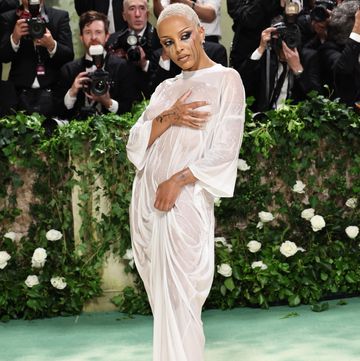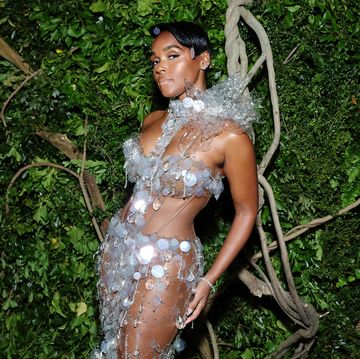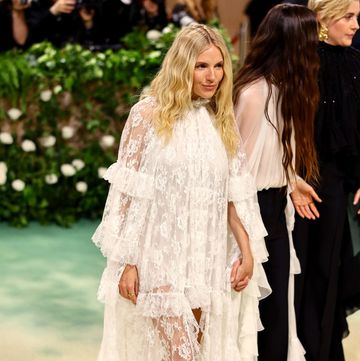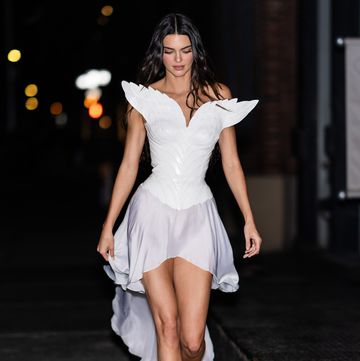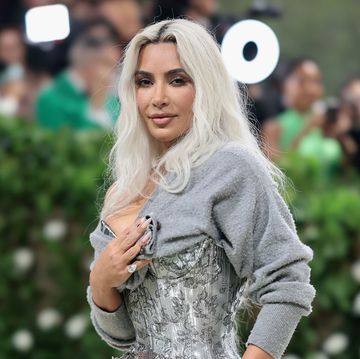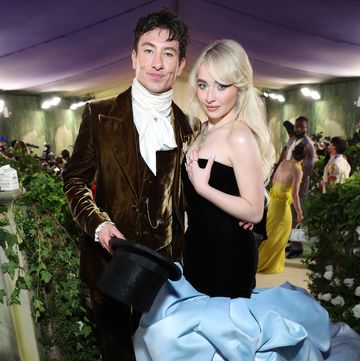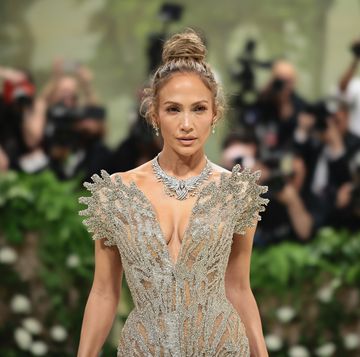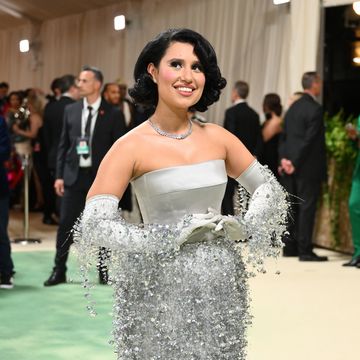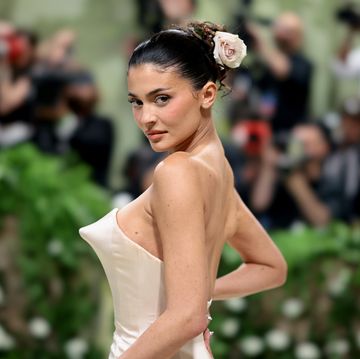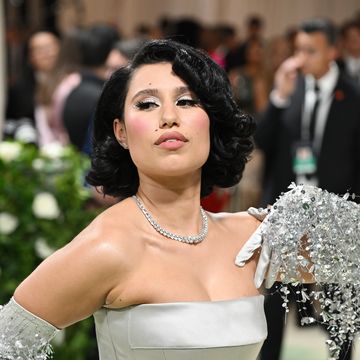GIF: Altuzarra, Alexander Wang and Prabal Gurung - IMAXTREE
Yesterday ended on a high with the show. The unlikely inspiration came from two cult films that the designer, Joseph Altuzarra, had been obsessing over: psychological thriller Rosemary’s Baby (1968) and costume drama Barry Lyndon (1975). You’d never have guessed his starting point (had you not read the show notes), which is all credit to Altuzarra’s light hand. He started out with pretty pink gingham, a direct reference to Mia Farrow’s sweet maternity dresses in Rosemary’s Baby, but his line-up of lightweight tailoring was seductive, not naïve, with narrow jackets tied at the waist and svelte skirts that buttoned down the front – or rather unbuttoned down the front. Everything about these clothes suggested a simmering undercurrent, from the ribbons that tied seams together leaving glimpses of bare skin to the way supple suede caressed the hips on a slim dress.
As for the Barry Lyndon references, Altuzarra had teased the romance out of Stanley Kubrick’s epic 18th century period drama; there were no costumes here. But the fabrics became richer with Japanese blooms, beaded and embroidered, and a latticework of soft leather strips to make skin-revealing skirts. The beautiful finale gowns were his 21st century take on grand robes, with all the stuffing and structure taken out.
Altuzarra’s inspirations are beside the point. Great fashion today is all about a strikingly clear message and this designer showed he can deliver just that.
IMAGE: Altuzarra, Alexander Wang and Prabal Gurung - IMAXTREE
In fact, he wasn’t the only one. , who straddles both his own-name label in New York and Balenciaga in Paris, seemed to have refocused the lens on his own line this season. Yes, it still looked like Balenciaga, but it also looked more Wang – at least, much more of what you want when you think of Wang. This is the dilemma for any designer who leads a double life – there’s only one of them. One mind creating two worlds, it can’t be easy. But this was startling progress compared to last season’s over-wrought, sexless clothes worn by unsmiling fembots.
This collection transported you back to why you loved Wang in the first place: streety, sporty, strong clothes. At the root of it all was the trainer – the footwear, if any, that most epitomises the designer – elements of which were worked into the clothes. A pair of power-coloured Nikes became power-coloured second-skin dresses, white tennis shoes became white tennis dresses, injection-moulded soles appeared in the form of an embossed grey foam shift. The most heartening thing to see here were the three long loose dresses with panels and swooshes of perforated airtex in black, white and blue – perfectly simple, easy to wear, they reminded you what Wang is all about.
Earlier in the day, illuminated his blacked-out venue behind New York’s passport office with frost white, recalling the designer’s memories of snow-capped mountains in Nepal. There was a lot going on in this collection – at times, too much. While it was great to see the Singapore-born, New York-based designer let off some creative steam, applying so many elements to one piece meant the message became fogged, lacking the one sure thing that makes New York fashion great: easy wearability.
The opening short skirts trailed long flapping strips of chiffon, while ribbons wafted out of trouser seams – actually, these were the simple pieces, along with racer-front tops. It wasn’t just the Swarovski crystal, ostrich feathers, embroidered landscapes, sports-tech fabrics, petal-like ruffles, lace spliced with leather and matchstick sequins that came loaded on sculpted dresses, it was the way the designer flitted from one idea to the next. A section of a-symmetric richly-coloured, open-weave sweaters and skintight trekking pants looked good, but how did they belong to everything else? Today’s fashion works best served up in one straightforward statement. Easier said than done.


